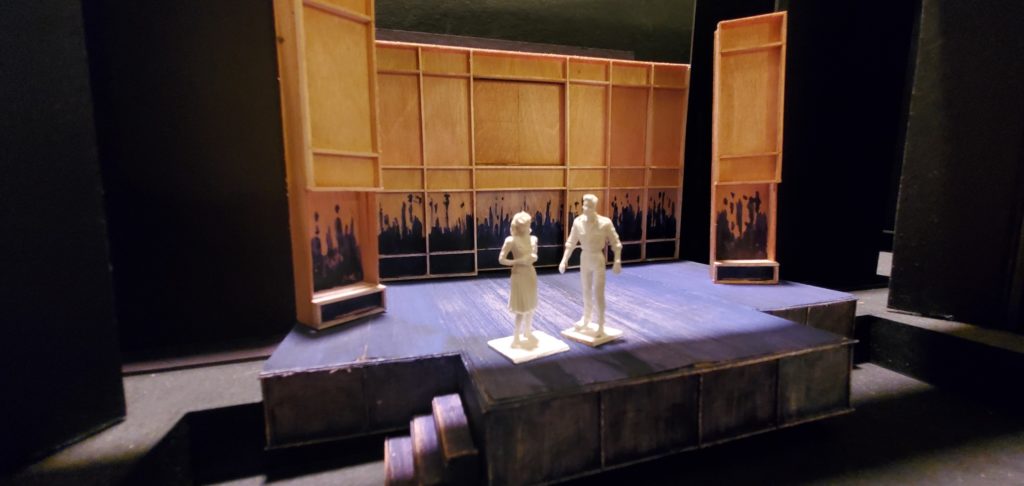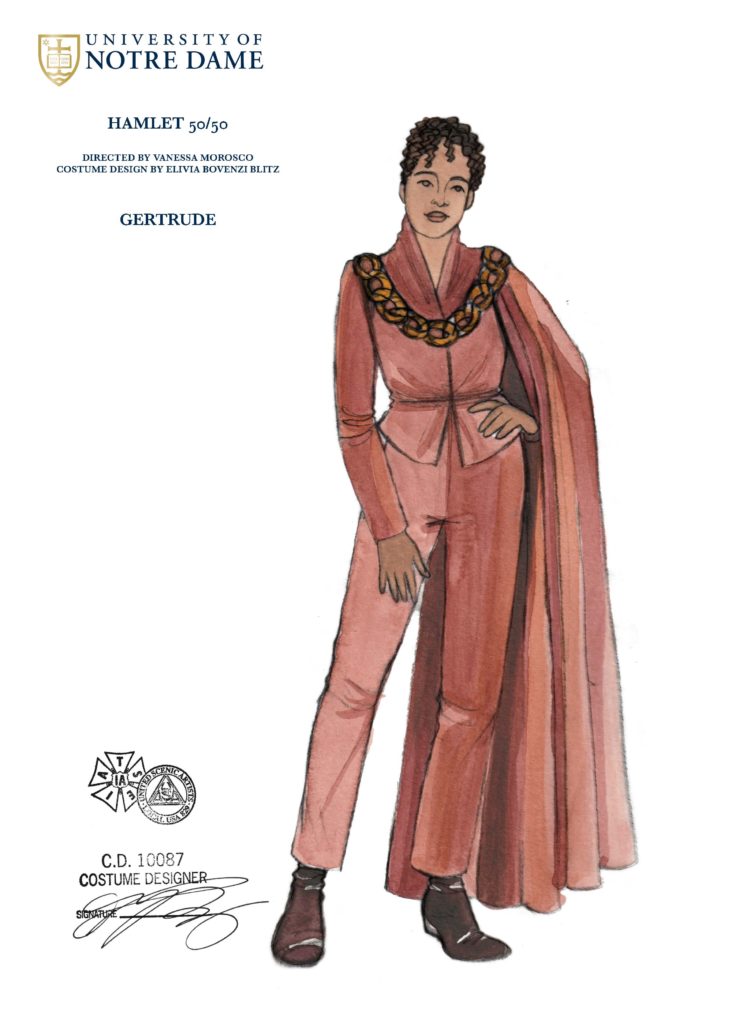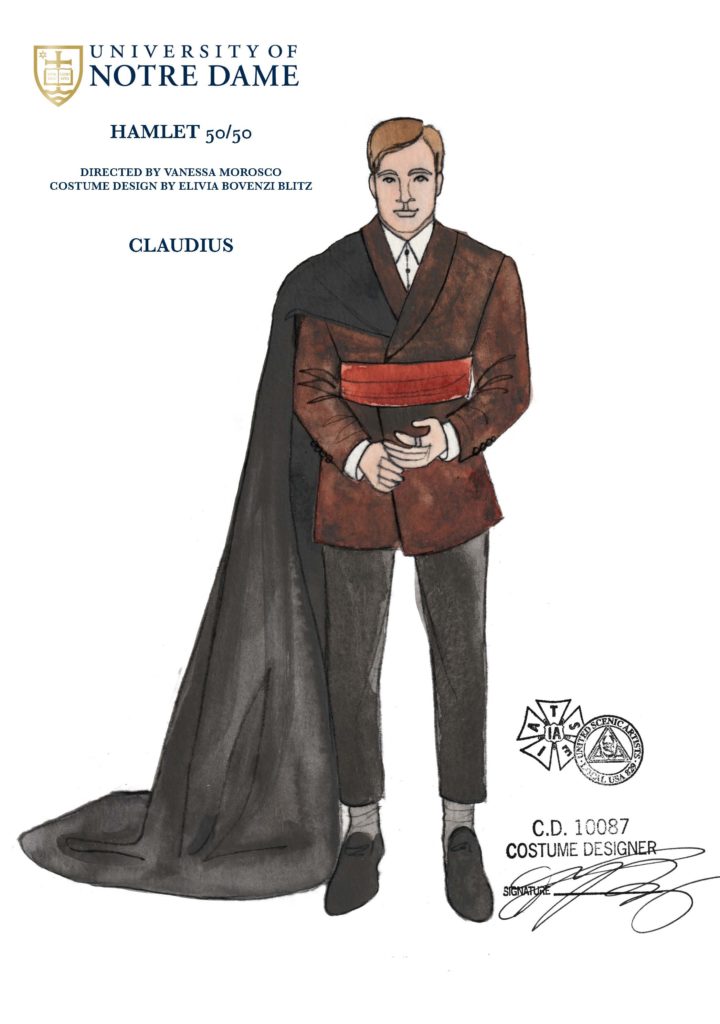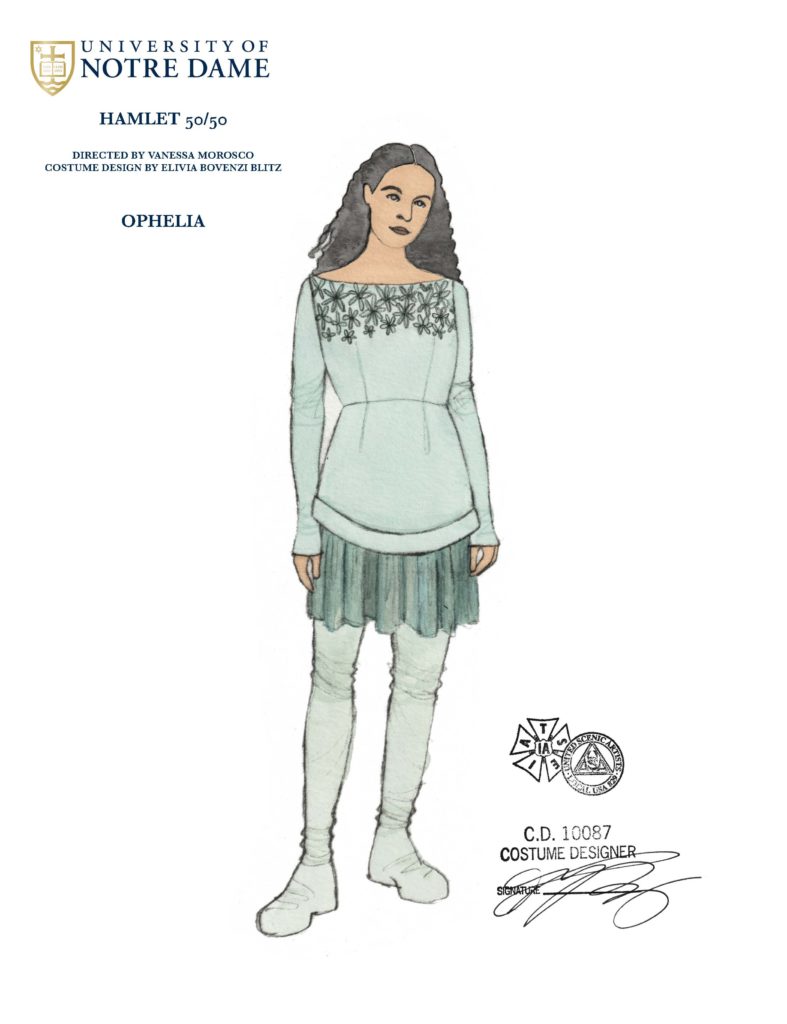By Jennifer Thorup Birkett
Scenic designer Marcus Stephens describes the moment in which he heard the Hamlet 50/50 pitch as an “ah-ha moment,” a long-sought-after solution to a perennial problem regarding the casting of male-presenting actors and the lack of female roles. But he also saw the project as a way to not merely keep Shakespeare alive, but to keep Shakespeare relevant and to address the current climate of union strikes and work equity in the arts.
While designing, Stephens kept two phrases in mind: utility and original practice. “Original practice” refers to the ways in which Shakespeare’s company originally utilized a theater’s resources (trap doors, canons, etc) to stage their productions. In designing the set for Hamlet 50/50, Stephens sought a negotiation between the past and the present and a celebration of the practical / the reusable. For inspiration, Stephens looked to intellectual and aesthetic movements such as the Russian revolution and Nordic minimalism (think IKEA storage solutions). The result is a set which celebrates texture, honest materials, and clean lines.
In building the set, Stephens and technical director / scenic artist Jeff Szymanowski focused on maneuverability and actor interaction, wanting to give more ownership to the players on the stage. Although initially appearing as one connected structure, doors open, and panels pull away to create separate spaces. In many ways, the set is a collection of building blocks all working together to tell a story–much like the cast itself.
It is easy to hear metaphors of the 50/50 project ringing throughout Szymanowski’s building process as he discusses the need for extra support when wooden framing, which is typically hidden, moves into a more central role. Notions of equitable practice and distribution of labor come forth as Szymanowski discusses uniting two 1x pieces of wood, rather than simply use 1 2x, as a way to lighten the load and ultimately make the structure stronger. From the design, to the construction, and eventually to the movement by the actors on the stage, this set is a beautiful example of teamwork and practicality.




